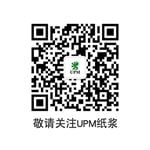“Landowners are establishing plantations under different types of contracts like leasing their lands to UPM or making partnership contracts. UPM owns approximately 60% of the plantations it currently manages, and the rest belongs to private land owners,” explains Ricardo Methol, Manager, Technical Development and Planning, UPM Forestal Oriental.
Cattle grazing is the most traditional way to use grasslands. There are more than 60,000 head of cattle belonging to private owners on UPM lands.
Besides this, there are other opportunities to create additional income. Honey production, for example, is becoming an important agribusiness.
“Thanks to the abundant flowering of our eucalyptus grandis plantations, honey producers have been able to extend their production season. Normally most of the flowering from native vegetation takes place in springtime, but E. grandis flowers in autumn.”
“Currently we are developing a pilot project for certifying honey under the PEFC™ scheme. This is a new initiative in Uruguay, and I think globally as well. This is a breakthrough project, creating added value from non-forestry products in terms of sustainability of origin.”
Mushroom picking has become another interesting opportunity for locals to create some extra income in rural areas.
“Local people have access to our plantations to pick mushrooms that develop naturally under the trees. This is mainly a social aspect for rural communities, but some people are benefitting from the activity economically too,” says Methol.

